- KATRD 2019 International Conference
-
November 7(Thu)-8(Fri), 2019 Lotte Hotel World, Seoul, Kore
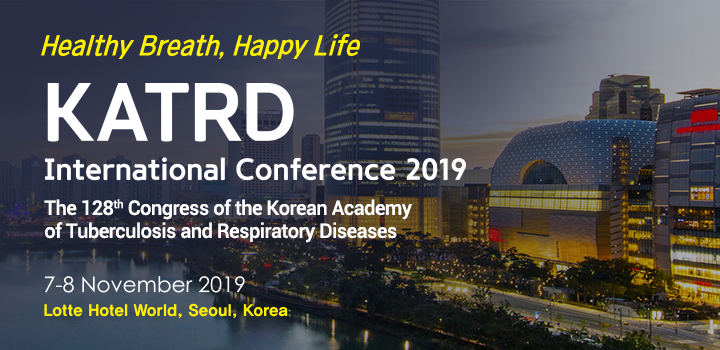
- Accommodation & Transportation
Tour Program
- Rise and Shine
- Afternoon Tour
- Seoul City + Korean Folk
Village
Full Day Tour - Traditional & Modern
Full Day Tour - DMZ Morning Tour
- Nanta Performance
Night Tour
| Rise and Shine | |
|---|---|
| TOUR | T-1 |
| TIME | 08:00 ~ 13:00 |
| DATE | 7th, 8th ,9th of November 2019 |
| PRICE | 48,000krw p/p (min.1person) |
| INCLUSION | Tour guide, transportation and entrance fees. |
| ITINERARY | Lotte Hotel World Pick up - Jogyesa Buddhist Temple - Changing of the Guard Ceremony - Gyeongbok Palace (Deoksu Palace Tuesday only) - Presidential Blue House (photo time) - Cheongwadae Sarangchae (closed every Monday) -Shopping Center - Drop off at Lotte Hotel World Hotel. |
| NOTE | * Cheongwadae Sarangchae closes every Monday. * Deoksu Palace instead of Gyeongbok Palace on Tuesday. * Changing of the Guard Ceremony can be cancelled depends on the weather. |
Jogyesa Buddhist Temple
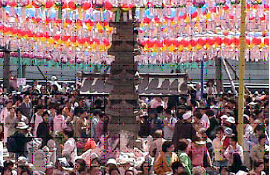
Jogyesa Buddhist Temple is the center of Zen Buddhism in Korea, and is famous for being located in the city. From the busy streets of Jongno, follow the road towards Anguk Subway Station, and you will see Jogyesa Temple. The first things you will notice at the temple are the lovely trees. These locust trees and baeksong trees in front of the Daeungjeon, the main temple building, are about 500 years old.
Cheongwadae Sarangchae
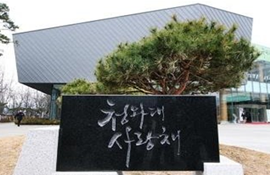
The newly opened Cheongwadae Sarangchae, which opened to the public on January 5th, 2010, is a history center that gives visitors a chance to follow in the footsteps of presidents of Korea and gain insight into the history of Seoul. It encompasses the past, present and even the future of Seoul as well as the entire nation. It serves as a tourist information center that offers detailed information on World Cultural Heritage sites and assets.
Presidential Blue House
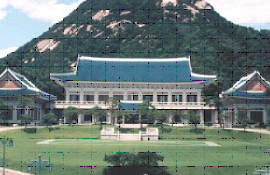
The symbol of Cheongwadae (known to westerners as the Blue House or the presidential residence), is the blue tiles. The first thing that catches your eyes when you arrive at Cheongwadae is the blue tiles of the main building. The blue tiles and the smooth roof are in beautiful harmony with Mt. Bugaksan behind it. As the Blue House represents Korea, the blue tiles and the smooth curve of the roof represents the beauty of Korea.
Changing of the Guard Ceremony
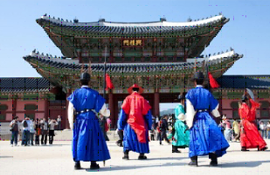
Every day visitors to Gyeongbok palace can watch a reenactment of the "Changing of the Royal Guards" ceremony, which takes place at the Gwanghwamun and Heungnyemun plazas. The royal guards of the Joseon Dynasty (1392~1910) were in charge of protecting the gates of the capital city and the royal palace.
Gyeongbok Palace
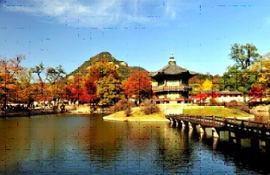
Built in 1395, Gyeongbok Palace is also commonly referred to as the "Northern Palace" because it is located more toward the north, compared to the neighboring palaces of Changdeok (Eastern Palace) and Gyeonghee (Western Palace). Gyeongbok Palace is arguably the most beautiful and remains the grandest of all the five palaces.
| Afternoon Tour | |
|---|---|
| TOUR | T-10 |
| TIME | 12:20 ~ 17:30 |
| DATE | 7th, 8th ,9th of November 2019 |
| PRICE | 50,000krw p/p (min.1 person) |
| INCLUSION | Tour guide, transportation and entrance fees. |
| ITINERARY | Lotte Hotel World Pick up - Changdeok Palace (N Seoul Tower on Monday only; excluding Observatory) - Insadong Arts and Crafts Market - Shopping Center - Namdaemun Traditional Market - Drop off at Lotte Hotel World. |
| NOTE | * N Seoul Tower; excluding Observatory, instead of Changdeok Palace on Monday. |
Changdeok Palace

Changdeok Palace is the second royal villa built after Gyeongbok Palace in 1405. Changdeok was the principal palace for many of the Joseon kings, and is the best preserved among the five remaining royal Joseon palaces. The rear garden that was used as a place of rest by the kings boasts a gigantic tree that is over 300 years old, a small pond, and a pavilion. The palace grounds are comprised of a public palace area, a royal family residence building, and the rear garden.
Insadong Arts & Crafts Market
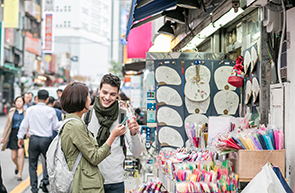
Insadong has been at the heart of nation's capital for 600 years and it has been the center of culture during the Chosun Dynasty (1392-1910). This is where the Ministry of Art was once situated. Insadong usually refers to the area from Anguk-dong Rotary to Tapgol Park in Jongro 2(i)-ga, past the Insadong Intersection. The notable features of Insadong are the countless alleys that branching out from the main street. Insadong has become known as 'Merry's Area,' a favorite shopping spot among foreigners.
Namdaemun Traditional Market

Opened in 1964, Namdaemun Market is the first largest traditional market in Korea with various goods in store such as children's, men's and women's wear. The displayed goods are sold at a reasonable price and it also functions as a wholesale market. Most of the goods are produced directly from shopkeepers. Namdaemun Market is opened from 11:00 pm and at 3:00 am; it is crowded with retailers from all over the country. At daybreak, the site of busy Koreans creates a unique scene in the market where it is becoming a worldwide tourist attraction.
| Seoul City + Korean Folk Village Full Day Tour | |
|---|---|
| TOUR | T-16 |
| TIME | 08:00 ~ 17:30 |
| DATE | 7th, 8th ,9th of November 2019 |
| PRICE | 100,000krw p/p (min.1person) |
| INCLUSION | Tour guide, transportation, lunch and entrance fees. |
| ITINERARY | Lotte Hotel World Pick up - Jogyesa Buddhist Temple - Changing of the Guard Ceremony - Gyeongbok Palace (Deoksu Palace Tuesday only) - Pass by Presidential Blue House - Cheongwadae Sarangchae (closed on every Monday) - Shopping Center - Lunch - Korean Folk Village (Traditional Houses or Farmers Music & Dance or Equestrian feats) - Shopping Center - Drop off at Lotte Hotel World. |
| NOTE | * Cheongwadae Sarangchae closes every Monday. * Deoksu Palace instead of Gyeongbok Palace on Tuesday. * Changing of the Guard Ceremony can be cancelled depends on the weather. * The Performances inside the Korean Folk Village can be cancelled depends on the weather. |
Jogyesa Buddhist Temple

Jogyesa Buddhist Temple is the center of Zen Buddhism in Korea, and is famous for being located in the city. From the busy streets of Jongno, follow the road towards Anguk Subway Station, and you will see Jogyesa Temple. The first things you will notice at the temple are the lovely trees. These locust trees and baeksong trees in front of the Daeungjeon, the main temple building, are about 500 years old.
Cheongwadae Sarangchae

The newly opened Cheongwadae Sarangchae, which opened to the public on January 5th, 2010, is a history center that gives visitors a chance to follow in the footsteps of presidents of Korea and gain insight into the history of Seoul. It encompasses the past, present and even the future of Seoul as well as the entire nation. It serves as a tourist information center that offers detailed information on World Cultural Heritage sites and assets.
Presidential Blue House

The symbol of Cheongwadae (known to westerners as the Blue House or the presidential residence), is the blue tiles. The first thing that catches your eyes when you arrive at Cheongwadae is the blue tiles of the main building. The blue tiles and the smooth roof are in beautiful harmony with Mt. Bugaksan behind it. As the Blue House represents Korea, the blue tiles and the smooth curve of the roof represents the beauty of Korea.
Changing of the Guard Ceremony

Every day visitors to Gyeongbok palace can watch a reenactment of the "Changing of the Royal Guards" ceremony, which takes place at the Gwanghwamun and Heungnyemun plazas. The royal guards of the Joseon Dynasty (1392~1910) were in charge of protecting the gates of the capital city and the royal palace.
Gyeongbok Palace

Built in 1395, Gyeongbok Palace is also commonly referred to as the "Northern Palace" because it is located more toward the north, compared to the neighboring palaces of Changdeok (Eastern Palace) and Gyeonghee (Western Palace). Gyeongbok Palace is arguably the most beautiful and remains the grandest of all the five palaces.
Korean Folk Village

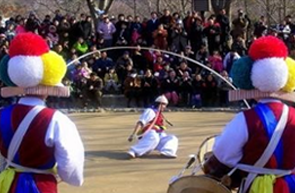
Set in a natural environment occupying approximately 243 acres, visitors can experience the natural atmosphere with over 260 traditional houses reminiscent of the late Joseon Dynasty, including various household goods from different regions. All these features have been relocated and restored to provide visitors with a broad understanding of Korean food, clothing, and housing style of the past. About twenty workshops, various handicrafts such as pottery, baskets, winnows, bamboo wares, wooden wares, paper, brass wares, knots, fans, musical instruments, iron wares and embroidery are practiced. In the Korean Folk Village, where the customs and lifestyles of the past generations have been carefully preserved, various lifestyles prevalent during the Joseon Dynasty can be seen. You can visit the Folk Museum as well as the Art Museum (scheduled to open) to see and learn about the essence of Korean culture and folk customs, which are not suitable for display and re-creating in the open-air setting. Korean Folk Village is also the filming location for the famous movie Scandal as well as the TV miniseries Daejanggeum.
| Traditional & Modern Full Day Tour | |
|---|---|
| TOUR | T-17 |
| TIME | 08:00 ~ 17:30 |
| DATE | 7th, 8th ,9th of November 2019 |
| PRICE | 119,000krw p/p (min.2person) |
| INCLUSION | Tour guide, transportation, lunch and entrance fees. |
| ITINERARY | Lotte Hotel World Pick up - Cheongwadae Sarangchae (Insadong Arts & Crafts Market Monday only) - Namsan Hanok Village (Bukchon Hanok Village on Monday only) - N Seoul Tower - Shopping Center - Lunch - Aquarium - Jogyesa or Bongeunsa Buddhist Temple - Han River Cruise - Shopping Center - Drop off at Lotte Hotel World. |
| NOTE | * Insadong Arts & Crafts Market instead of Cheongwadae Sarangchae on Monday. * Bukchon Hanok Village instead of Namsan Hanok Village on Monday. * Han River Cruise can be cancelled depends on the weather. * Passport is needed on the tour day. |
Cheongwadae Sarangchae

The newly opened Cheongwadae Sarangchae, which opened to the public on January 5th, 2010, is a history center that gives visitors a chance to follow in the footsteps of presidents of Korea and gain insight into the history of Seoul. It encompasses the past, present and even the future of Seoul as well as the entire nation. It serves as a tourist information center that offers detailed information on World Cultural Heritage sites and assets.
Namsan Hanok Village
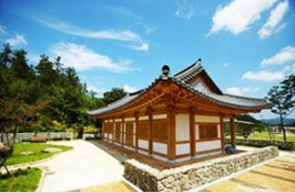
Namsan Hanok Village has restored five traditional Korean houses, with a pavilion, a pond and a time capsule, which makes it a nice place for a promenade. When you enter the front gate, you will see the vast valley and the Chunugak to the left of the pond. It Built without any decorations; the pond contains only schools of carp that swim back and forth. Along with the pond, it is a splendid place where performances are held. On the side you will see five traditional houses. These houses belong to various social ranks of the society from the common peasant to the king.
N Seoul Tower
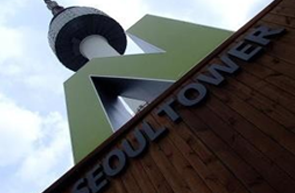
Opened to the public on October 15, 1980, Seoul Tower has been designated as a major tourist attraction where the beautiful panoramic view of Seoul can been seen. The 236.7 meter high Seoul Tower built on the 243m Mt. Namsan has been known as the best tower in Asia. After 30 years of devoted support from tourists, it was remodeled on December 9, 2005 with a magnificent new look. The letter N signifies a 'new' look, and a total construction cost of 15 billion won was invested in to giving Seoul Tower its new look. With the construction of the new lighting system, the appearance, color and pattern of the tower brings change to each season or event.
Coex Aquarium

The COEX Aquarium is spread out over a large area and showcases no less than 40,000 sea creatures, which come from 600 different species. The aquarium is unique in Korea because it has been designed around the theme of "Water Journey". On entering the museum, visitors will embark on an adventure that follows water on its journey from the high Andean mountains, through the Amazon tropical rainforest to swamps, rivers, seashores, and finally to the depths of the ocean. Visitors will get an in-depth look into some of the world's fascinating underwater creatures.
Han River Cruise
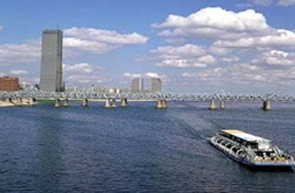
Hangang River Ferry Cruise is one of the best ways to enjoy the scenery around Hangang River that flows through Seoul. On the cruise, you can see Hangang River's beautiful scenery, the surrounding islands, Jeoldusan Park, the 63 Building, Namsan Tower, Jamsil's Multi Sports Complex, and other famous tourist spots. The cruise is often used for weddings, birthday parties, music performances and other events.
| DMZ Morning Tour | |
|---|---|
| TOUR | T-25 (Morning Tour) |
| TIME | 07:00 ~ 14:00 |
| DATE | 7th, 8th ,9th of November 2019 |
| PRICE | * 65,000krw p/p (min.1person) * 60,000krw p/p (min.3people) |
| INCLUSION | Tour guide, transportation and entrance fees. |
| ITINERARY | Lotte Hotel World Pick up - Imjingak Park - The Bridge of Freedom - The 3rd Infiltration Tunnel - DMZ Theater/Exhibition Hall - Dora Observatory - Dorasan Station - Unification Village (Pass by) - Drop off at Lotte Hotel World. |
| NOTE | * DMZ closes every Monday and National Holiday. * Passport is needed on the tour day. * No special dress code for DMZ tour. |
Imjingak

This park was built to console the refugees who left North Korea during the Korean War. A train called " the Iron horse wants to run" symbolizes the railway connecting the north and the south that was dismantled during the war. Also, at the park are the following attractions; Mangbaedan, an altar set up for refugees to bow in the direction of their ancestral graveyards; Freedom bridge, which was built to free 12,773 prisoners in 1953; Unification pond, which is in the shape of the Korean Peninsula; and the Peace bell.
The 3rd Tunnel
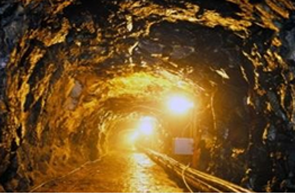
The 3rd Tunnel was discovered on October 17, 1978. It is located 52km from Seoul. Approximately 10,000 soldiers can move through this tunnel in 1 hour. When this tunnel was discovered, North Koreans insisted steadfastly that it was made by South Koreans to invade North Korea, but this proved to be false.
Dora Observatory

Built in 1986, this is the only place in South Korea where you have a clear view of Geaseong city, the third biggest city in North Korea. You can observe two flags, a propaganda village, Geaseong industrial complex, and one of the statues of Kim Il Sung.
Dorasan Station
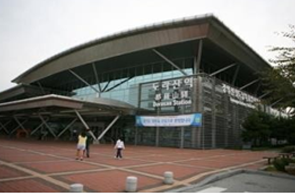
Built in 2002 to reconnect Seoul and Sinuiju (kyoungui line), located in the civilian restriction line. The northernmost train station in South Korea which will be the first train station connecting to China, Siberia and Europe.
| Nanta Performance Night Tour | |
|---|---|
| TOUR | T-36 |
| TIME | 17:00 |
| DATE | 7th, 8th ,9th of November 2019 |
| PRICE | 80,000krw p/p (min.2people) |
| INCLUSION | Tour guide, transportation and entrance fees. |
| ITINERARY | Lotte Hotel World Pick up - Nanta Performance - Drop off at Lotte Hotel World. |
Nanta Performance

Nanta Theater is the permanent home of the first Korean non-verbal performance called 'Nanta.' Nanta is a hybrid artwork, the combination of a traditional Korean folk performance called 'Samulnori' and Western forms of performance. On the stage is a giant kitchen, where four cooks appear and start cooking dishes for a wedding reception. In the process, they perform Samulnori using the various cooking utensils, such as pots, pans, and plates, etc. It was a big hit from the moment it opened, due to the power and speed of the performance. Though mainly consisting of rhythm and beats, its clever plot makes it enjoyable for people of all ages and backgrounds. It received high praise for its performance in other countries, and now has a foreign audience of about 70-80%. A theater was built exclusively for Nanta in Gangbuk in 2000, but a second one was built in Gangnam due to the overwhelming number of patrons. The Gangnam Theater was opened in April of 2002. The Gangbuk Theater has a capacity of 291, while the Gangnam Theater has a capacity of 293.
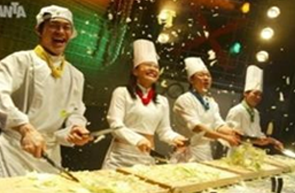
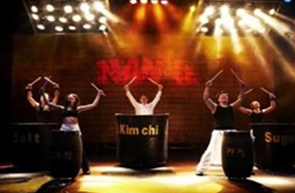
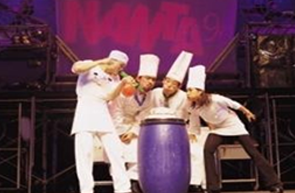

 REGISTRATION
REGISTRATION
 ABSTRACT
ABSTRACT  DOWNLOAD
DOWNLOAD  VENUE
VENUE
 CONTACT US
CONTACT US